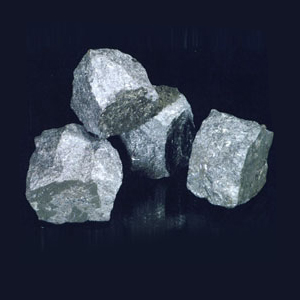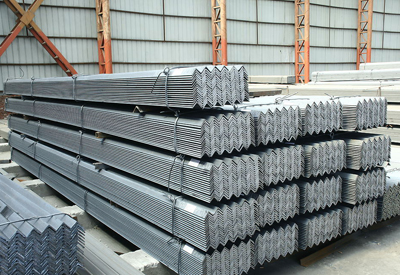[Ferro-Alloys.com] Commission Implementing Regulation (EU) 2025/2351 of 18 November 2025 imposing a definitive safeguard measure with regard to imports of certain ferro-alloying elements
1. PROCEDURE
1.1. Initiation
(1) On 19 December 2024, the European Commission (‘the Commission’) published a Notice of Initiation of a safeguard investigation concerning imports of silicon and manganese-based alloying elements (4).
(2) The investigation was initiated following a request from three Member States (France, Poland and Slovakia, supported by Spain). The analysis of the request showed that the rising trend in imports of certain silicon and manganese-based alloying elements and the conditions in which they take place cause or threaten to cause serious injury to the Union industry.
(3) In order to obtain the information necessary to carry out an in-depth assessment, the Commission published questionnaires for Union producers, exporters, importers, and users of the product under investigation on 19 December 2024 and invited interested parties to make submissions before 17 January 2025. On 9 January 2025, the Commission published the non-confidential version of the application containing key import statistics and available injury indicators.
(4) The Commission received 106 questionnaire replies and 61 free submissions at initiation stage and during the rebuttals phase from Union producers, exporters, importers, users, associations and third country authorities, and it held hearings with 22 interested parties.
(5) The Commission conducted a thorough verification of the information provided by Union producers. To this end, three Union producers were selected for an on-spot verification based on their production volume of like or directly competing products during the period concerned and their geographical location in the Union. The three selected producers represent 85% of the total Union production and are located in France, Slovakia and Poland.
(6) Several interested parties claimed that the Commission failed to disclose the evidence on which the initiation of the safeguard investigation was based in an adequate and timely manner. It was claimed that by failing to do this, interested parties were not allowed to fully exercise their rights of defence.
(7) Contrary to these claims, the application included all the essential data regarding the increase in imports. Furthermore, the Commission considered that, in addition, the main elements and evidence available were adequately summarised both in the Notice of Initiation that was published in the Official Journal of the European Union and the notification of the investigation to the WTO pursuant to Article 12.1(a) of the WTO Safeguard Agreement.
(8) The Commission therefore considered that it fulfilled its legal obligations to adequately protect the rights of defence of interested parties. Furthermore, pursuant to Article 5 of Regulation (EU) 2015/478 and Article 3 of Regulation (EU) 2015/755 all interested parties who requested a hearing within the time limit set were granted such hearing and were given an additional opportunity to submit their comments during the rebuttal phase. When reaching its definitive findings, the Commission duly considered and took into account the comments submitted within the deadlines by all interested parties, in writing or orally during the hearing sessions.
1.2. Non-imposition of provisional measure
(9) On 18 July 2025, the Commission sent a proposal to consider the imposition of provisional measure. However, as a result of the discussions within the Safeguard Committee, the Commission has decided not to impose a provisional safeguard measure but to continue the investigation.
(10) On 18 July 2025, the Commission having made a preliminary determination, and in accordance with Article 113(1) of the Agreement on the European Economic Area (the EEA Agreement), notified the EEA Joint Committee that a safeguard measure was justified under Article 112 of the EEA Agreement. A meeting of the EEA Joint Committee was held on 24 July 2025, where the notification of the preliminary determination with regard to imports of certain ferro-alloying elements was discussed. On 8 August 2025, the EEA EFTA States sent a response to the Commission’s notification to the EEA Joint Committee. On 21 August 2025, the Commission informed the EEA Joint Committee of its intention not to impose provisional measure and to continue the investigation. On 19 September 2025, the Commission informed the EEA Joint Committee on the status of the investigation. On 10 October 2025, the Commission notified the EEA Joint Committee in accordance with Article 113(1) of the EEA Agreement that a safeguard measure was justified under Article 112 of the EEA Agreement.
1.3. Subsequent procedure
(11) The Commission continued to seek and verify all the information it deemed necessary for its final findings. The Commission continued its investigation with regard to Union interest and carried out an analysis of the situation of the user industry.
(12) In order to obtain the most recent information for its final determination, on 4 August 2025, the Commission requested the association representing the Union producers to submit an updated supplementary questionnaire covering the period from 1 July 2024 to 30 June 2025, ‘the most recent period’ or ‘MRP’.
(13) On 16 September 2025, the investigation was extended by a period of 2 months with a notice published in the Official Journal of the European Union (5).
2. PRODUCT CONCERNED AND LIKE OR DIRECTLY COMPETING PRODUCTS
(14) The product concerned as defined in the Notice of Initiation is silicon and manganese-based alloys, namely (i) silicon, (ii) ferro-manganese, (iii) ferro-silicon, (iv) ferro-silico-manganese, (v) ferro-silico-magnesium and (vi) calcium-silicon.
(15) The Commission determined that all types of silicon and manganese-based alloys produced by Union producers, referred to as ‘the like product’ are like or are directly competing with the product concerned. Both the domestic and imported products possess the same fundamental physical, technical, and chemical characteristics. They serve identical purposes and are offered through similar or identical sales channels to customers who may acquire them from both domestic and foreign suppliers. Accordingly, there exists a significant level of competition between the product concerned and the one produced by Union producers.
(16) After the initiation, several interested parties claimed that there is not one single product concerned but several products concerned. Hence, they questioned the global analysis of the relevant import trends and injury indicators together for all product types under investigation. Parties argued that the analysis should have differentiated between silicon and manganese-based alloys, notably because of the various degrees of interchangeability.
(17) In response to these claims, the Commission conducted a further analysis based on the Union producers’ questionnaire replies and sought additional information during the verification visits to determine whether there is interrelation, interchangeability and competition among the different product types (6). The various different types of silicon and manganese-based alloys share notable similarities in their production techniques and industrial applications (7). For instance, ferro-silicon, ferro-manganese and ferro-silico-manganese play overlapping roles in steelmaking. They are connected primarily by their function as deoxidizers, which enhances the quality and properties of the final alloyed product. Additionally, they share common raw materials, namely iron, silicon and manganese. In the steel industry, ferro-manganese and ferro-silico-manganese are often used interchangeably. When a specific steel grade requires both manganese and silicon, ferro-manganese can be replaced by ferro-silico-manganese. Steel producers frequently combine these alloys to achieve specific chemical properties in steel, optimising both performance and cost. Calcium-silicon and various ferro-alloys have overlapping but not entirely interchangeable roles in steelmaking and foundry operations. While all these materials are used to modify or enhance the properties of molten metal, their chemical characteristics and metallurgical functions differ significantly, which limits their ability to be directly substituted for one another.
(18) As regards silicon, there is some overlap between the ferro-alloys and silicon. However, the aluminium industry primarily favours pure silicon due to its compatibility with aluminium properties, while ferro-silicon is only used in niche or secondary aluminium applications where some iron content is acceptable or necessary. Ferro-alloys are alloying agents added in small volumes to improve properties of steel and are a minor cost component in the steel product. Silicon on the other hand is a core raw material used mainly in the aluminium industry, but also in the chemical industry, in particular for the manufacture of silicones.
(19) In addition, the cost of production of silicon is significantly higher (by more than 60% on average) than that for ferro-alloys. The distinction is also reflected in the classification under the Harmonized System (HS). Silicon is classified under Chapter 28 of the HS/EU Combined Nomenclature (CN), while ferro-alloys are classified under Chapter 72. Therefore, the substitutability between silicon and ferro-alloys is limited and it is thus concluded that silicon does not directly compete with the ferro-alloys.
(20) In view of the above, the Commission categorised the product concerned into three distinct groups, each based on the primary raw material and its intended applications. In addition to the overall analysis, a detailed examination of import trends was conducted for each product group separately: (a) silicon, (b) ferro-alloys, and (c) calcium-silicon. The examination of imports by group showed that all groups increased in absolute terms with the exception of imports of the silicon group, which remained stable or slightly decreased by 0,2% during the period concerned and further decreased by 2,7% in the MRP (see Table 1).
3. THE UNION PRODUCERS
(24)The producers of like or directly competing products within the Union included Ferroglobe, Comilog, OFZ, Realloys, RW Silicium, Xeal, TDR Legure, and ASK Metallurgy. Most of the Union producers are members of the Association of European ferro-alloys producers (‘Euroalliages’). The industry association represents 97% of the Union’s silicon and manganese-based alloys production. Their members are located in France, Germany, Poland, Slovakia and Spain.
(25)On behalf of their members, the industry association informed the Commission that it supports the opening of a safeguard investigation, as well as the adoption of a measure as the Union producers are facing exceptional difficulties due to high import pressure fuelled by growing global overcapacity and the closing of other major markets due to trade defence measures.
(26)The Commission requested the eight Union producers identified in the application and as indicated above in recital (24) to submit questionnaire replies. Furthermore, on 4 August 2025, the Commission requested the Union producers to submit an updated supplementary questionnaire and received replies from Ferroglobe, OFZ, Realloys, Xeal, Comilog and RW Silicium.
(27)As explained under recitals 17, 18 and 19, the Commission found that ferro-alloys and silicon are not directly competing products, due to differences in costs of production, their applications and HS classification. On this basis, the Union producers of the like or directly competing products were defined as the producers of ferro-alloys.
(28)There are seven producers of the like and directly competing products in the Union (Ferroglobe, OFZ, Realloys, Xeal, TDR Legure, Comilog and ASK Metallurgy), and all of them completed the questionnaire. As stated above in recital (5) three Union producers were selected for verification visits.
4. INCREASE IN IMPORTS
(29)Based on information from Eurostat, as well as information submitted by the Union producers, the Commission has carried out an analysis of the increase in imports of the product concerned over the period 2019-2024 (‘the period concerned’) and also considered import trends in the MRP. The Commission decided to start the period concerned in 2019 so that the findings are not tainted by possible market disturbances caused by the COVID-19 pandemic. To comply with Union obligations regarding imports from Ukraine (8) and under the Economic Partnership Agreement with Kenya (9), imports from these countries have been excluded from this investigation. Kenya did not export the product concerned to the EU during the period concerned. Therefore, in all that follows, imports do not include imports from Ukraine as those imports are not covered by the present measure.
(30)The Commission established the Union consumption by adding the sales of the Union industry in the Union and the imports into the Union. The information on imports was sourced from Eurostat.
- [Editor:tianyawei]



 Save
Save Print
Print Daily News
Daily News Research
Research Magazine
Magazine Company Database
Company Database Customized Database
Customized Database Conferences
Conferences Advertisement
Advertisement Trade
Trade















 Online inquiry
Online inquiry Contact
Contact

Tell Us What You Think